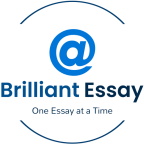Brillant Essay
Transforming Stress into Triumph Unleash the Power of a Professional Essay Writer!
Entrust your assignments to our essay writing service, boasting the swiftest delivery and entirely original content

Brilliant Essay Your Partner in Academic Excellence
We understand the demands of academia and the importance of well-crafted essays. Our platform is designed to be your academic companion, ensuring that you not only meet deadlines but excel in your writing assignments.
Our Key Features

Expert Writers
Our team comprises skilled writers with expertise in various subjects. They are dedicated to delivering high-quality, well-researched, and original content tailored to your academic needs.

Wide Range of Topics
Whether it’s a complex research paper, an engaging essay, or a creative piece, we cover a broad spectrum of topics. Our writers are well-versed in diverse subjects to meet the unique requirements of your assignments.

Timely Delivery
We understand the importance of deadlines. With Brilliante Essay you can expect prompt and timely delivery of your assignments, ensuring you have ample time for review.
Students Stories
As a college student juggling multiple assignments, Brilliant Essay has been a game-changer for me. The writers are exceptional, delivering high-quality essays promptly. My grades have seen a significant boost, and the stress of deadlines is now a thing of the past. Highly recommend Brilliant Essay!"
